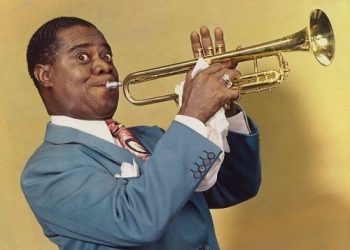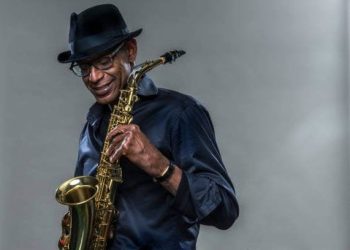The saxophone, with its soulful timbre and expressive range, has captivated audiences for over a century. From smoky jazz clubs to grand concert halls, this versatile instrument has played a pivotal role in shaping modern music. In this article, we celebrate the legends who have pushed the boundaries of saxophone artistry, transforming mere notes into powerful emotional experiences.
Join us as we delve into the lives and careers of the top 15 saxophone players of all time, each of whom has left an indelible mark on the world of music. From pioneers who defined jazz to contemporary virtuosos who innovate with every breath, these musicians have not only mastered their craft but have also inspired generations of artists.
Prepare to be enthralled by stories of passion, perseverance, and groundbreaking creativity. Whether you’re a seasoned saxophonist or a casual listener, this exploration of talent will deepen your appreciation for the instrument and its extraordinary players. Get ready to discover the icons who have made the saxophone sing, swing, and soar, redefining genres and captivating hearts along the way!
1. John Coltrane
John Coltrane stands as one of the most influential and innovative figures in jazz history. A saxophonist, composer, and bandleader, Coltrane redefined the possibilities of jazz through his deep spiritual journey and groundbreaking musical explorations. In the 1950s and 1960s, Coltrane was a driving force behind the transformation of jazz, blending elements of bebop, modal jazz, and avant-garde jazz in ways that were both profound and daring. His iconic album *A Love Supreme* is not just a masterpiece but a testament to his artistic vision and his deep connection to spirituality. This work, often considered one of the greatest jazz albums of all time, showcased Coltrane’s mastery of improvisation and his ability to weave complex harmonies and rhythms into a deeply personal statement of faith and devotion.
Coltrane’s innovation extended beyond his compositions. His technical skill on the saxophone was extraordinary, but it was his relentless quest for personal and musical growth that truly set him apart. His work with Miles Davis, including the legendary Kind of Blue, was a pivotal moment in jazz, introducing modal jazz and changing the way musicians thought about improvisation. Coltrane’s later works, such as Meditations and Ascension, pushed the boundaries even further, embracing free jazz and expanding the emotional and sonic range of the saxophone. His relentless experimentation and expansion of the jazz form continue to inspire musicians across genres today, cementing Coltrane’s place as a true giant of jazz.
2. Charlie Parker
Charlie Parker, affectionately known as “Bird,” is often hailed as one of the most transformative figures in the history of jazz. His pioneering role in the development of bebop in the 1940s reshaped the very foundations of jazz, creating a new language for improvisation and composition. Parker’s lightning-fast playing, intricate melodies, and unparalleled technical skill made him a virtuoso of the alto saxophone. His compositions, such as “Ornithology” and “Ko-Ko,” have become essential standards, studied by musicians and jazz enthusiasts around the world. Parker’s ability to create complex harmonic structures with his innovative chord substitutions and his deep understanding of the jazz language allowed him to break free from traditional chord changes and create new, more advanced frameworks for improvisation.
Bird’s influence extended beyond his musical innovations; his approach to improvisation and his approach to jazz itself became a model for future generations of musicians. He was known for his ability to transcend the confines of standard chord progressions, making his improvisations not just an exploration of melody but of harmony itself. Parker’s life was tragically short, but his impact on the world of jazz is immeasurable. His recordings with the likes of Dizzy Gillespie and Miles Davis are considered the gold standard for bebop, and his compositions continue to shape the direction of modern jazz.
Parker’s legacy is undeniable. His ability to reinvent jazz and push the boundaries of musical expression has made him an enduring symbol of innovation and creativity in the world of music. He remains an inspiration to saxophonists and jazz musicians everywhere, and his influence is felt in virtually every corner of contemporary jazz.
3. Sonny Rollins
Sonny Rollins is widely regarded as one of the greatest saxophonists in the history of jazz. Known for his powerful tone, distinctive improvisational style, and mastery of both the tenor saxophone and jazz improvisation, Rollins has had a profound influence on the genre. Throughout his career, Rollins was admired not only for his virtuosic playing but also for his deep understanding of the jazz tradition, which he continuously pushed forward with each new phase of his music. His album *The Bridge* is often considered one of his finest achievements, a landmark in his evolution as an artist. The album showcases Rollins’ remarkable ability to balance technical mastery with emotional depth, as well as his willingness to take risks with his improvisations and compositions.
What makes Rollins stand out is his ability to reinvent himself throughout his career. From his early work with Miles Davis and Max Roach to his later solo albums, Rollins explored a wide range of jazz styles, from bebop to hard bop to modal jazz and beyond. His improvisational skills are legendary, with the ability to create complex, extended solos that remain compelling and relevant despite their often unpredictable nature. Rollins’ music is always engaging, whether through his bold soloing, his mastery of rhythm, or his ability to stretch musical ideas to their limits.
Sonny Rollins is a saxophonist whose influence spans decades, and his contributions to jazz remain essential. His quest to push boundaries and continually evolve as a musician has kept him at the forefront of jazz, making him an enduring and respected figure in the world of music.
4. Stan Getz
Stan Getz, affectionately known as “The Sound,” is a legendary figure in the world of jazz, best known for his smooth, lyrical playing and his ability to convey emotion through his saxophone. Getz’s career spanned decades, but it was his collaboration with Brazilian musicians that brought him international acclaim and introduced the bossa nova movement to the United States in the 1960s. His work with Antonio Carlos Jobim on the album *Getz/Gilberto*, which includes the timeless classic “The Girl from Ipanema,” brought the bossa nova genre to the mainstream, and his silky, mellow sound became synonymous with this genre. Getz’s ability to blend jazz improvisation with the rhythmic, melodic elements of bossa nova gave his music a unique and instantly recognizable voice.
Getz’s musical style was marked by a sensitivity and expressiveness that made his playing captivating. Whether performing in jazz combos or large ensembles, Getz’s tone was always smooth, warm, and rich, with a focus on phrasing that allowed him to create long, flowing lines full of emotional depth. His collaborations with other jazz legends, such as Joao Gilberto, Astrud Gilberto, and Charlie Byrd, further cemented his status as a true innovator in the genre. Getz’s ability to weave intricate melodies into his improvisations made him a standout saxophonist of his time.
Stan Getz’s legacy continues to inspire musicians, particularly saxophonists, who seek to capture the warmth and expressiveness that made his sound so iconic. His ability to evoke deep emotion through his instrument makes him one of the most beloved and influential jazz musicians of all time.
5. Lester Young
Lester Young is considered one of the most influential and distinctive saxophonists in jazz history. His relaxed, cool style of playing revolutionized the role of the tenor saxophone in jazz and influenced countless musicians who followed in his footsteps. Young’s playing was characterized by its smooth, understated tone and its ability to create long, flowing melodies that were both intricate and expressive. He was a master of phrasing, often stretching and elongating notes in ways that gave his solos a sense of ease and spontaneity. His innovative approach to jazz improvisation helped pave the way for later generations of saxophonists and shaped the development of cool jazz.
Young’s work with the Count Basie Orchestra, particularly on recordings such as “Lester Leaps In,” demonstrated his remarkable skill in balancing technical mastery with emotional depth. His solos, often marked by their relaxed swing feel, were a stark contrast to the more aggressive playing styles of some of his contemporaries. Yet, despite his laid-back approach, Young’s improvisations were rich with subtle harmonic innovation and melodic complexity. His unique voice on the saxophone became a defining characteristic of the Basie band’s sound.
Lester Young’s influence can be heard in the playing of many saxophonists who followed, from Stan Getz to John Coltrane. His ability to create a sound that was both cool and complex made him a trailblazer in the world of jazz. His legacy lives on through his recordings, which continue to inspire jazz musicians today.
6. Cannonball Adderley
Cannonball Adderley was an alto saxophonist known for his exuberant energy and captivating performances, making him one of the most beloved figures in jazz. His joyful and soulful sound became his signature, blending the hard bop tradition with blues, gospel, and even elements of funk. Adderley’s charisma both as a performer and bandleader captured the hearts of audiences worldwide. His work on classic tracks like “Mercy, Mercy, Mercy” remains an enduring highlight of his career, showcasing his ability to create melodies that are both heartfelt and deeply rooted in the American jazz tradition.
Adderley’s approach to the saxophone was all about feeling and groove. His improvisations were marked by an infectious rhythm and a sense of spontaneity, often pushing the boundaries of what the alto saxophone could do. While his tone was powerful, it also carried a lightness that made his playing feel effortless. This contrast allowed him to deliver performances that were both emotionally resonant and technically sophisticated. Throughout his career, Adderley worked with some of the biggest names in jazz, including Miles Davis, with whom he recorded Kind of Blue, a groundbreaking album that remains one of the best-selling jazz albums of all time.
Adderley’s influence extended far beyond his own recordings. He helped shape the sound of the 1960s and 1970s jazz scene, infusing it with soul, blues, and a strong sense of musicality. His ability to communicate with his audience through his horn and his infectious joy at the bandstand made him an iconic figure. Today, Adderley’s music continues to inspire new generations of jazz musicians, especially those who seek to blend technical mastery with an emotional connection to their art.
7. Ornette Coleman
Ornette Coleman was one of the most revolutionary figures in the history of jazz, often credited with the development of free jazz—a genre that broke away from traditional harmonic structures and embraced improvisation without boundaries. Coleman’s unique approach to the saxophone and his unconventional view of jazz helped reshape the genre in ways that would resonate for decades to come. His most notable album, *The Shape of Jazz to Come*, was a landmark in jazz history, representing the full embrace of a new approach to improvisation and form.
Coleman’s style was highly individualistic, characterized by an emotional and atonal way of playing that often ignored conventional harmonic and melodic rules. His sound on the alto saxophone was raw, expressive, and often dissonant, but always compelling. He rejected the idea that jazz had to follow a set structure or chord progression, instead opting to create music based on the spontaneous interaction between the musicians. His refusal to adhere to the norms of jazz made him a highly controversial figure at the time, but also one of its most innovative and forward-thinking artists.
Beyond his musical impact, Coleman was an advocate for creative freedom in jazz, helping to liberate future musicians from the constraints of the genre’s past. His recordings with his revolutionary band, including bassist Charlie Haden and drummer Billy Higgins, demonstrated a new form of jazz improvisation that allowed for greater emotional expression and experimentation. Coleman’s influence can be heard in the works of countless artists, from the avant-garde jazz movement to modern experimental musicians.
8. Michael Brecker
Michael Brecker was a virtuoso saxophonist known for his extraordinary technical ability and versatility across multiple genres, from jazz to fusion to pop. His innovative approach to the tenor saxophone earned him a reputation as one of the leading figures in modern jazz. Brecker’s sound was powerful and distinctive, characterized by a bright, cutting tone and an ability to weave complex harmonic ideas into his improvisations with ease. His technical command of the instrument was unmatched, but it was his capacity to infuse emotional depth and soul into his playing that truly set him apart.
Brecker’s career spanned a wide range of musical landscapes. He was a prominent member of the groundbreaking jazz fusion band Steps Ahead, which helped define the genre in the 1980s. His work as a session musician also brought him into contact with some of the biggest names in music, from Paul Simon to Frank Zappa. His saxophone solos on songs like “Late in the Evening” by Simon and “Black Market” by Weather Report are celebrated for their ability to blend jazz virtuosity with the accessibility of pop and rock.
Throughout his life, Brecker’s work was characterized by a tireless commitment to innovation. His solo albums, including Michael Brecker and Time Is of the Essence, showcase his technical prowess alongside his emotive and creative playing. Brecker’s legacy is one of pushing the boundaries of jazz and the saxophone, paving the way for future generations of musicians to explore new and exciting territory.
9. Joe Lovano
Joe Lovano is an alto and tenor saxophonist who has garnered critical acclaim for his inventive improvisations and rich sound. Lovano’s musical journey spans across genres, blending elements of jazz, blues, and world music to create a style that is distinctly his own. Throughout his long career, Lovano has collaborated with jazz legends like Charlie Haden, Elvin Jones, and John Scofield, all while maintaining a forward-thinking, creative approach to his music. His sound is known for its depth and complexity, marked by long, flowing lines, and a deep sense of groove.
One of Lovano’s most notable qualities as a saxophonist is his ability to seamlessly combine various cultural influences into his playing. He incorporates elements of Latin, African, and European music traditions, creating a sound that is both eclectic and cohesive. His ability to express emotion through his improvisation has earned him a devoted following, and his compositions often reflect his broad musical interests. Lovano’s albums, such as Universal Language and Rush Hour, showcase his innovation and versatility, with each project revealing a different aspect of his musical personality.
Lovano’s impact on the jazz world has been immense, earning him multiple Grammy nominations and critical acclaim for his rich contributions to modern jazz. His performances, whether in intimate jazz clubs or large concert halls, always demonstrate a deep respect for the jazz tradition while pushing the genre forward in exciting new directions.
10. Pharoah Sanders
Pharoah Sanders is one of the key figures in the development of avant-garde jazz and spiritual jazz, known for his deeply emotional and transcendental approach to music. His playing on the tenor saxophone is characterized by a distinctive, raw, and at times otherworldly sound that resonated deeply with listeners seeking a more profound connection to music. Sanders’ career is marked by his exploration of the spiritual and mystical aspects of jazz, particularly through his collaboration with John Coltrane in the 1960s, where they recorded some of the most groundbreaking spiritual jazz albums of all time.
His solo career, especially with albums like Karma, further cemented his reputation as a pioneer of avant-garde and free jazz. Karma, with its hauntingly beautiful composition “The Creator Has a Master Plan,” is often hailed as one of the greatest achievements in spiritual jazz. Sanders’ ability to combine dissonance and melody in a way that felt both meditative and intensely powerful became his signature style, and his use of extended techniques on the saxophone pushed the boundaries of traditional playing. His exploration of themes like love, consciousness, and spiritual awakening added a dimension to his music that went beyond technical mastery, creating a sound that was as much about feeling as it was about form.
Pharoah Sanders’ music continues to inspire and challenge listeners. His ability to channel the ineffable through his saxophone has made him one of the most respected and revered figures in the history of jazz.
11. Dave Koz
Dave Koz is a renowned contemporary saxophonist whose smooth, melodic playing has earned him a place as one of the leading figures in smooth jazz. With a career spanning over three decades, Koz’s music blends sophisticated jazz melodies with a pop sensibility, making him a favorite among a wide range of audiences. His ability to craft accessible, catchy tunes while maintaining a high level of musicality has made him a household name in the world of instrumental jazz. Known for his smooth tone, intricate phrasing, and engaging stage presence, Koz has built a successful career as both a performer and an ambassador of contemporary jazz.
Koz’s musical journey began in the late 1980s, and his breakout album, Dave Koz, showcased his rich sound and songwriting talent. Throughout his career, he has collaborated with an impressive roster of artists, including Burt Bacharach, Rod Stewart, and Kenny Loggins. These collaborations, along with his solo work, have earned him numerous Grammy nominations and chart-topping hits. His albums, like The Dance and At the Movies, feature smooth jazz arrangements with a distinctive blend of soul and pop influences that have made him a standout figure in the genre.
In addition to his musical success, Koz is known for his philanthropic efforts and his ability to connect with audiences on a personal level. His annual Christmas tour has become a tradition for many, bringing joy to fans around the world. Koz’s warmth and charisma, both as a performer and as a person, have endeared him to audiences, cementing his place as one of the most influential saxophonists of his generation. His contributions to the smooth jazz genre continue to resonate, and his music remains an enduring favorite for fans of all ages.
12. Kenny Garrett
Kenny Garrett is a dynamic and versatile saxophonist whose bold playing and improvisational skills have made him one of the most exciting figures in modern jazz. With a career spanning several decades, Garrett has built a reputation for his high-energy performances and inventive compositions. His ability to blend traditional jazz elements with funk, R&B, and world music influences has made his sound distinctive and widely influential. Garrett’s saxophone tone is powerful, yet soulful, and his ability to navigate complex rhythms and harmonies with ease has earned him the respect of both peers and listeners alike.
Garrett’s journey into jazz began at a young age, and he quickly gained recognition for his work as a sideman, particularly with the legendary Miles Davis in the 1980s. His time in Davis’ band helped shape his musical identity and gave him the opportunity to experiment with fusion and contemporary jazz styles. In addition to his work with Davis, Garrett has collaborated with jazz icons like Art Blakey, Freddie Hubbard, and Chick Corea. His own albums, such as Songbook and Pushing the World Away, showcase his growth as a leader and his continued exploration of the boundaries of jazz.
Garrett’s music is known for its passion and intensity, often fusing elements of jazz with other genres like soul and funk to create a sound that resonates with a broad audience. His powerful improvisations are filled with energy and emotion, making each performance a unique experience. As one of the leading voices in modern jazz, Garrett’s contributions to the genre continue to inspire new generations of musicians and listeners alike.
13. Gerald Albright
Gerald Albright is a saxophonist whose soulful sound and musical versatility have made him a standout performer in both jazz and R&B circles. Albright’s ability to seamlessly transition between smooth jazz, soul, and funk has earned him a reputation as one of the most talented and respected saxophonists of his generation. With a career that spans over three decades, Albright’s smooth, rich tone and ability to infuse emotion into every note has made him a beloved figure in the contemporary music scene. His playing is characterized by a deep, resonant sound that conveys both power and subtlety, making him a unique voice in the world of instrumental music.
Albright’s musical career began in the 1980s, and his work as a session musician with artists like Anita Baker, Ray Charles, and Whitney Houston helped establish his reputation as a top-tier saxophonist. His own albums, such as Pleasures of the Night and Saxuality, showcase his ability to blend jazz with smooth R&B grooves, creating a style that is both accessible and musically sophisticated. His saxophone playing is full of soul, with a distinctive tone that has earned him widespread acclaim.
In addition to his impressive discography, Albright is known for his live performances, where his vibrant stage presence and captivating solos leave audiences in awe. His ability to connect with listeners through his music is one of the reasons he remains a beloved figure in both jazz and pop music circles. Whether performing solo or alongside other musicians, Gerald Albright’s contribution to contemporary music is undeniable, and his work continues to inspire saxophonists and music lovers around the world.
14. Tubby Hayes
Tubby Hayes was a British jazz saxophonist whose exceptional talent and innovative approach to music made him one of the most influential figures in the UK jazz scene. Known for his powerful tone, technical skill, and ability to weave intricate melodies into his improvisations, Hayes was a major force in the development of jazz in Britain during the 1950s and 1960s. His music was a blend of hard bop, swing, and traditional jazz, and his ability to play with both intensity and subtlety made him a standout performer on the international stage.
Hayes’s early exposure to jazz and his devotion to learning the saxophone set the stage for his later successes. He quickly gained a reputation as a gifted young musician and became a key figure in the British jazz movement. His work with the Tubby Hayes Quartet and collaborations with other jazz legends like Stan Tracey and Tony Crombie helped solidify his place as a leading figure in jazz. His albums, such as The 100 Club Sessions and Tubby’s Groove, showcase his inventive approach to jazz and his deep understanding of the genre.
Throughout his career, Hayes was known for his dexterity on the tenor saxophone, creating intricate and melodic lines that felt both complex and natural. His ability to seamlessly blend swing rhythms with bebop influences helped him define the sound of British jazz during a pivotal time. Though his career was tragically cut short, Tubby Hayes left an indelible mark on the world of jazz, and his music continues to be celebrated by jazz enthusiasts around the globe.
15. Chris Potter
Chris Potter is a contemporary saxophonist whose remarkable technique and innovative approach to jazz have earned him a reputation as one of the most exciting musicians of his generation. Known for his mastery of both the tenor and soprano saxophones, Potter’s playing is characterized by its complexity, fluidity, and emotional depth. His ability to weave intricate harmonies and rhythms into his improvisations has made him a sought-after musician, both as a bandleader and a collaborator. Potter’s music spans a wide range of genres, from post-bop to contemporary jazz to world music, making him one of the most versatile saxophonists in modern jazz.
Potter’s musical journey began in the 1980s, and by the early 1990s, he had already established himself as one of the most promising young talents in jazz. His work as a sideman with artists like Paul Motian, Pat Metheny, and Dave Holland helped shape his distinct sound and approach to improvisation. As a bandleader, Potter has released several critically acclaimed albums, including Lift: Live at the Village Vanguard and The Sirens, which showcase his impressive ability to blend complex musical ideas with a deep sense of groove.
Known for his technical mastery, Potter is also celebrated for his ability to convey emotion through his playing. His improvisations are full of color and nuance, with each note telling a story. Whether performing on the big stage or in smaller, more intimate settings, Chris Potter’s music continues to captivate audiences with its inventiveness, passion, and beauty. His contributions to jazz have helped redefine the genre, and his work remains an inspiration to musicians around the world.









